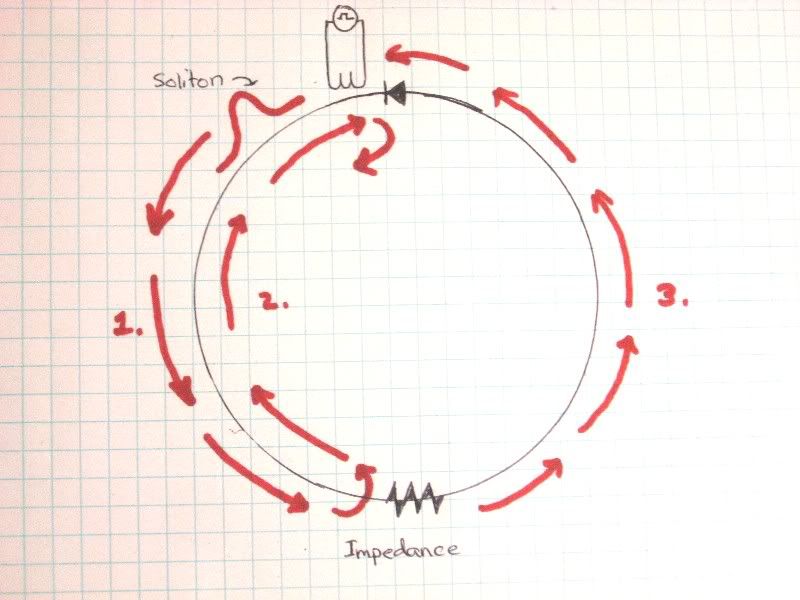ring circuit...
Below is a circuit that I used a PWM driver, a ferrite toroid, and a ring of copper tubing separated with a cap. Essentially a tank circuit. Connected to the ring was a parallel wired LED bank. The circuit, while lighting the LED's, uses very little energy and displays some interesting scope shots...
Since I'm still in the learning process it takes me alot more time to digest the outcome of my experiments. Below is a screen shot of the scope and ring circuit....
I'm not sure this is directly related to what your doing but has similarities to your description.
I tried a couple tank circuits using the "C-stack" idea but so far haven't had much success in removing energy from it without disturbing the tank resonance... which has been the case in quite a few of my attemps in various forms.
I've also been studying the Cook coils with the idea the coil layout is based on a concentric capacitor to create the oscillations. I haven't achieved any self oscillation of the coil system but oddly enough when you drive the iron core with a single lead from the FG the coils seem to come to life. My coils aren't built to specs by any means - far less than the 1000 ft stated in the patent. No real success with this experiment either. Interesting though....
________
Wendie 99
Below is a circuit that I used a PWM driver, a ferrite toroid, and a ring of copper tubing separated with a cap. Essentially a tank circuit. Connected to the ring was a parallel wired LED bank. The circuit, while lighting the LED's, uses very little energy and displays some interesting scope shots...
Since I'm still in the learning process it takes me alot more time to digest the outcome of my experiments. Below is a screen shot of the scope and ring circuit....
I'm not sure this is directly related to what your doing but has similarities to your description.
I tried a couple tank circuits using the "C-stack" idea but so far haven't had much success in removing energy from it without disturbing the tank resonance... which has been the case in quite a few of my attemps in various forms.
I've also been studying the Cook coils with the idea the coil layout is based on a concentric capacitor to create the oscillations. I haven't achieved any self oscillation of the coil system but oddly enough when you drive the iron core with a single lead from the FG the coils seem to come to life. My coils aren't built to specs by any means - far less than the 1000 ft stated in the patent. No real success with this experiment either. Interesting though....
________
Wendie 99


 ) to this question is....
) to this question is.... and do so in the most efficient manner. And of course the question will be; If we take that energy for our use, what effect will it have on the global weather system?
and do so in the most efficient manner. And of course the question will be; If we take that energy for our use, what effect will it have on the global weather system? Perhaps unseen powers know better than we the outworking of stealing this energy for ourselves and have been holding us back from using it. At least it sure seems that way
Perhaps unseen powers know better than we the outworking of stealing this energy for ourselves and have been holding us back from using it. At least it sure seems that way 

Comment